Nikolay Gogol
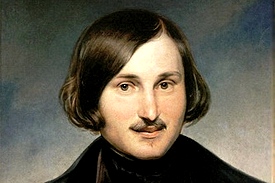
Born: Sorochyntsi, Poltava Governate - 31 March 1809
Died: Moscow - 4 March 1852
Nikolay Gogol, the author of the first great Russian novel of the 19th century, Dead Souls, as well as two classic plays and some of the finest short stories written in any language, was a true literary oddity. His peculiar, unhappy life and his uniquely dark comic sensibility have been consistently misunderstood by posterity, with critics fiercely debating his nationality, his religious beliefs, and even his sexuality. What has never been in doubt, however, is his immense literary talent which, while essentially sui generis, provided a template for the absurdist, surreal streak in Russian literature that continues to bear fruit to this day. Along with Alexander Pushkin, he also established a literary pattern for the depiction of St. Petersburg as a city of ambiguity and even monstrosity, life in which proves untenable for many of his long-suffering protagonists.
Nikolay Vasilievich Gogol was born in Sorochyntsi, a Ukrainian Cossack village in what is now Ukraine's Poltava Oblast. His family were from the lower ranks of the gentry, his mother of Polish descent and his father a Ukrainian Cossack who wrote poetry and drama in Ukrainian. The family spoke both Ukrainian and Russian at home, and Gogol would later make a conscious choice to pursue a literary career in Russian rather than Ukrainian. He was educated at the Gymnasium of Higher Sciences in Nezhyn, a school founded as part of Alexander I's education reforms.
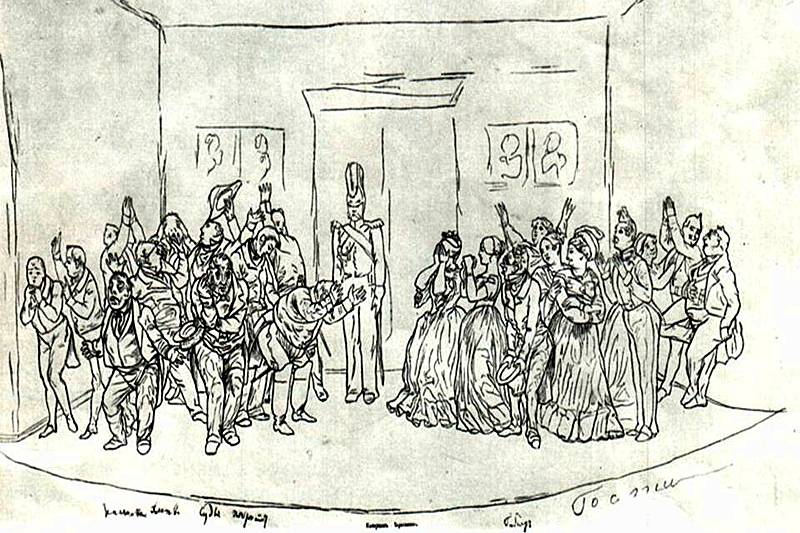
On leaving school in 1828, he moved to St. Petersburg with high ambitions of becoming a famous writer. He had with him a long Romantic poem of German rural life called Hans Küchelgarten, which he had published at his own expense and sent copies of to the leading literary journals. The work was rejected and derided by all, and Gogol bought up and burnt all the copies, swearing never to write poetry again.
He turned instead to prose, producing a series of tales set in the Ukrainian countryside, mostly comic, sentimental and occasionally macabre. These met with instant success, and were published in two volumes under the title Evenings on a Farm Near Dikanka in 1831 and 1832. Gogol's work was strongly supported by the leading lights of the St. Petersburg literary scene, including Vasiliy Zhukovsky and Pyotr Pletnyov, and even Alexander Pushkin, who he met in 1831 and formed a frienship with. His Ukrainian pastoral period continued with the two volumes of Mirgorod, published in 1835, but in the same year he also published the collection Arabesques, which contained stories set in St. Petersburg and included the classic Nevsky Prospekt and Diary of a Madman. These stories began to explore the themes of alienation and mental instability, set against the fripperies of fashionable life and the Byzantine inhumanity of the state's bureaucracy, that he would further develop in his most famous stories, The Nose (1836) and The Overcoat (1842).
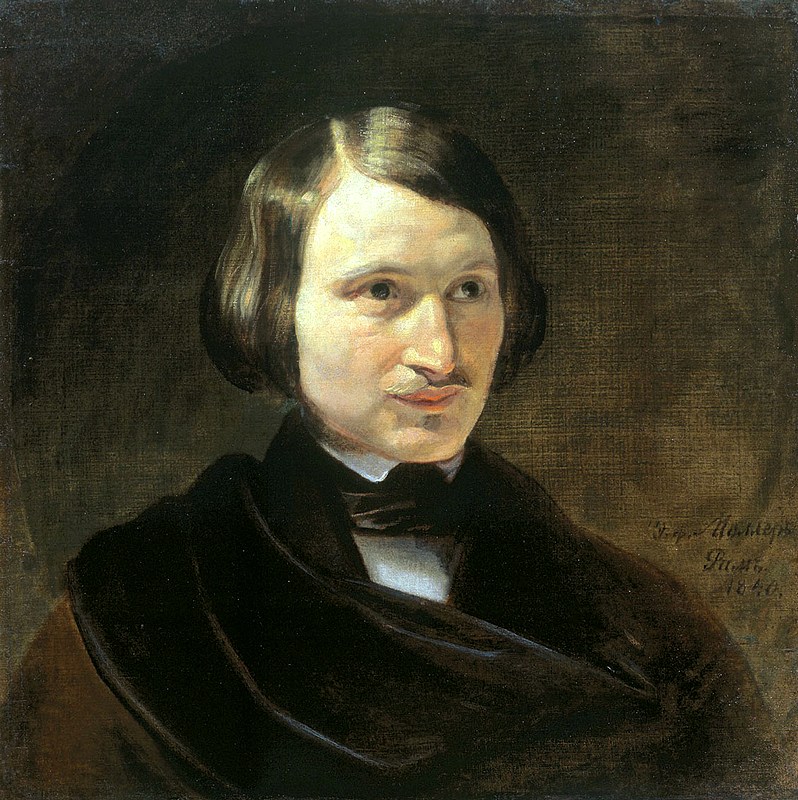
It was also in 1835 that he completed his first comedy for the stage, Marriage, although it was not published or performed until 1842. The Government Inspector, his most famous play, was premiered in 1836 after receiving the official approval of Nicholas I. A biting satire on the corruption and incompetence of provincial government, it was interpreted by many as an attack on the whole system of Tsarist rule, much to Gogol's consternation as he was in fact an ultraconservative monarchist.
Although he had achieved the literary success that he craved, and was equally admired by critics and general readers, Gogol had not found much personal happiness. He had developed an entirely amateur passion for history, and attempted to gain an appointment at the University of Kyiv, despite being utterly lacking in qualifications. His literary fame allowed him to win the professorship of medieval history at St. Petersburg University in 1834, but his lack of knowledge made him completely incapable of performing the work, and he resigned after only a year of farcical subterfuge and failure.
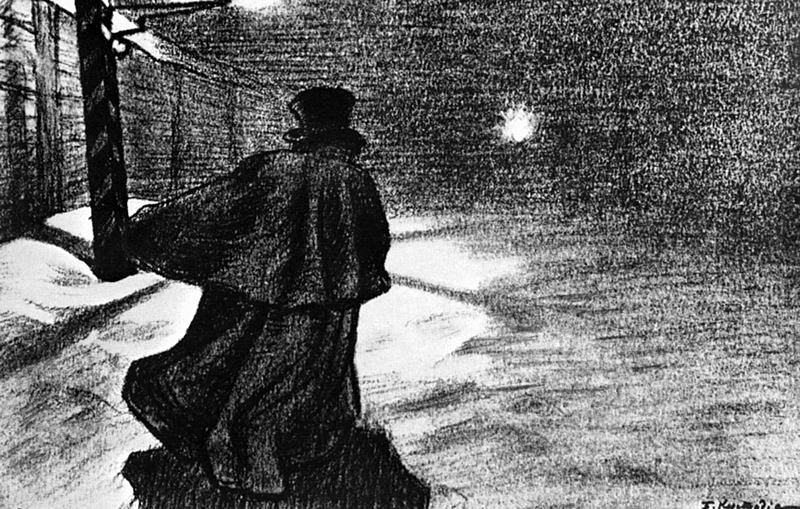
Gogol left Russia in 1836 and spent most of the next twelve years abroad, travelling in France, Germany and Switzerland, and eventually settling in Rome. There he studied art, became a committed opera lover, and supposedly fell in love in 1838 with Count Joseph Vielhorskiy, the 23-year-old son of a prominent Russian official who had come to Italy in an attempt to cure his tuberculosis. He died there the following year. All this time, Gogol continued to work his masterpiece, the satirical novel Dead Souls. He completed it in 1841 and returned to Russia to oversee its publication. It appeared the following year and was an enormous success, further cementing Gogol's position as one of Russia's best-loved authors.
Once again, however, Gogol was shocked and upset at the way his work was seen as a satirical attack on the whole Tsarist system. In fact, Gogol planned for Dead Souls to be the first part of a trilogy that would see his roguish protagonist Chichikov gradually reformed and spiritually purified. His increasingly religious disposition and his terror of demonic forces prompted him to make a pilgrimage to Jerusalem in 1846-1847, and in 1848 he returned to Russia to complete the second volume of his work. Dissatisfied with his writings, he fell further under the influence of the spiritual elder Matvey Konstantinovsky, who tried to convince him that writing fiction was a demonic and sinful activity. Gogol became increasingly ascetic, and suffered severe bouts of depression. During one of these on 24 February 1852, he burned most of the manuscripts of the second volume of Dead Souls. In despair at what he had done, believing himself to have been tricked by the Devil himself, Gogol took to his bed and refused all food, and died in agony nine days later.
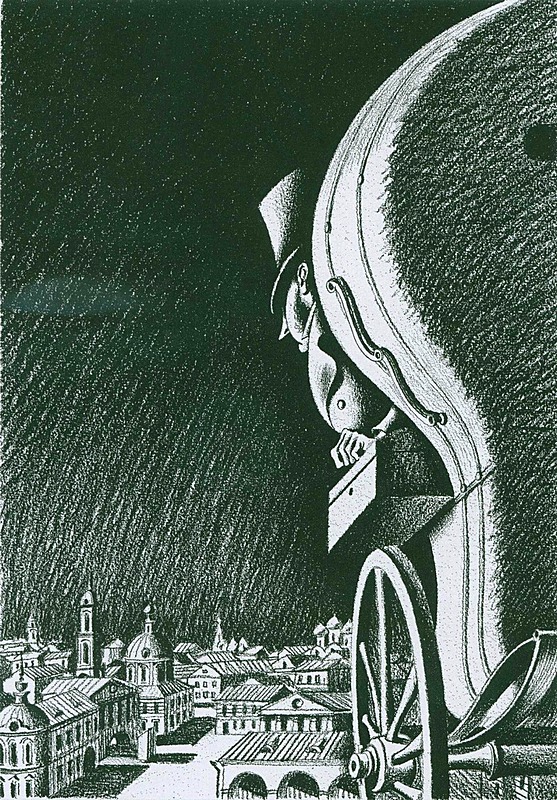
He was buried at the Danilov Monastery in Moscow. In the 1930s his grave was transferred to the Novodevichy Cemetery, during which process it was discovered that he was lying face down in his coffin, giving rise to the rumour that he had been buried alive. In St. Petersburg, Gogol is commemorated with an imposing and somewhat mournful statue on pedestrian Malay Konyushennaya Ulitsa just off Nevsky Prospekt.

